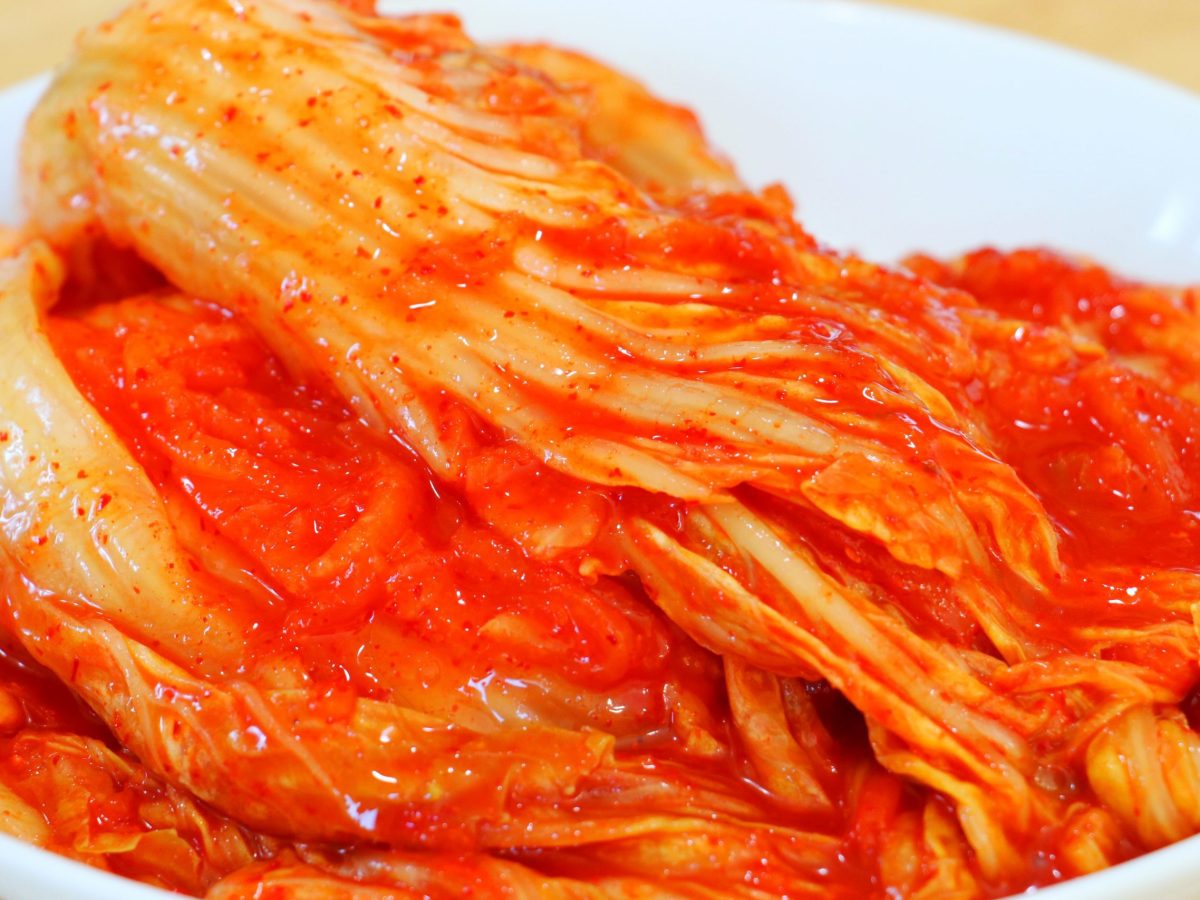Kimchi Recipe (Napa Cabbage Kimchi) 816
by Admin
Posted on 02-11-2023 01:22 PM

Kimchi / kimchee (김치) is a traditional korean side dish made from fermented cabbage, radish, or cucumber.
 It is often categorized by the main vegetable ingredient used to make it. Kimchi is a staple
food
in korean cuisine. Most koreans have it with almost every korean meal at least once a day. The most popular kimchi includes baechu kimchi (made with napa cabbage, 배추김치), kkakdugi (made with radish, 깍두기), and oi kimchi (made with cucumber, 오이김치).
It is often categorized by the main vegetable ingredient used to make it. Kimchi is a staple
food
in korean cuisine. Most koreans have it with almost every korean meal at least once a day. The most popular kimchi includes baechu kimchi (made with napa cabbage, 배추김치), kkakdugi (made with radish, 깍두기), and oi kimchi (made with cucumber, 오이김치).
Hello everybody! today i’m going to show you how to make classic, spicy, traditional napa cabbage kimchi called tongbaechu-kimchi, a. K. A. Baechu-kimchi or pogi-kimchi. But this dish is so common and iconic among koreans that we simply call it “kimchi. ” when people talk about kimchi, this is the side dish they’re referring to, despite the fact that there are many kinds of kimchi in korean cuisine , and many made with napa cabbage, too. Over the years i’ve posted recipes for a few of them, but i’ve never made an in-depth video for making tongbaechu-kimchi! i’ve made a video for mak-kimchi (easy kimchi recipe) , which is very similar but is easier because you to chop up the cabbage into bite size pieces first, and i’ve made an ultra simple yangbaechu-kimchi ( emergency kimchi).
Baechu, or napa cabbage , kimchi is made by lacto-fermentation, the same process that creates sauerkraut and traditional dill pickles. In the first stage, the cabbage is soaked in a salty brine that kills off harmful bacteria. In the second stage, the remaining lactobacillus bacteria (the good guys!) convert sugars into lactic acid, which preserves the vegetables and gives them that wonderful, tangy flavor. If you want to learn more about fermentation, i highly recommend the art of fermentation by sandor katz.
Gimchi, ipa: [kim. Tɕʰi] ), is a traditional korean banchan consisting of salted and fermented vegetables, most commonly using napa cabbage or korean radish. A wide selection of seasonings are used, including gochugaru (korean chili powder), spring onions , garlic , ginger , and jeotgal (salted seafood), etc. Kimchi is also used in a variety of soups and stews. Kimchi is a staple food in korean cuisine and is eaten as a side dish with almost every korean meal. There are hundreds of different types of kimchi made with different vegetables as the main ingredients. Traditionally, winter kimchi, called kimjang , was stored in large earthenware fermentation vessels, called onggi , in the ground to prevent freezing during the winter months and to keep it cool enough to slow down the fermentation process during summer months.
What Does Kimchi Taste Like
Kimchi’s flavor is complex and varies widely depending on the recipe. The main flavor notes you’ll find in kimchi include sour, spicy, and umami. The flavor will also vary depending on the vegetables you choose, the length of fermentation, and the amount of salt or sugar used. Because kimchi is a fermented dish, its most prominent flavor is typically sour. Lactic acid produced by bacteria during fermentation creates a tangy, pungent flavor similar to that of sauerkraut. The garlic, if present in kimchi, intensifies in taste during fermentation.
 Kimchi can also be spicy, depending on how much pepper is used and what kind, and may have ingredients such as fish paste, fish sauce , or anchovies; anything fish oriented will give it a strong umami note.
Kimchi can also be spicy, depending on how much pepper is used and what kind, and may have ingredients such as fish paste, fish sauce , or anchovies; anything fish oriented will give it a strong umami note.
Vegetables are tasty. Fermented vegetables are even better! in a nutshell, fermented vegetables are more digestible, tastier, and healthier. Lacto-fermentation (also called lactic acid fermentation) transforms plain vegetables into delicious kimchi. Fermentation involves lactic acid bacteria (naturally found in vegetables), which eat the sugar in the vegetables and create lactic acid. This is what gives the fermented vegetables their tender texture, and their nice tangy taste. Fermentation requires only salt and an oxygen-free environment to be successful. It’s as simple as mixing vegetables and salt and putting them in a jar! to learn all about vegetable fermentation, check out the complete guide to lacto-fermentation.
Kimchi tastes sour, tangy, salty, spicy, and pungent! it’s similar to sauerkraut in that it is fermented cabbage, but kimchi is packed with flavor, umami and a little (or a lot) of heat! the fermentation process is what gives kimchi its sour flavor.